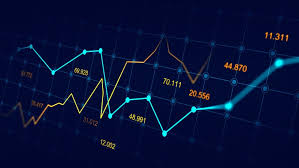
Understanding Margin in Forex Trading: A Comprehensive Guide
In the world of Forex trading, the term «margin» is crucial for any trader to comprehend. Margin represents the amount of capital required to open and maintain a leveraged trading position. The Forex market is notable for its high leverage, enabling traders to control large positions with a relatively small amount of invested capital. For more in-depth insights into trading and financial strategies, you can visit what is margin in forex trading https://trading-connexion.com/.
What is Margin?
Margin in Forex trading is essentially a good faith deposit required to open a leveraged trading position. It acts as a security deposit that ensures that traders can cover potential losses. Margin is not a cost, but rather a portion of your trading account equity that is set aside when you open a position. It’s important to distinguish between margin, collateral, and the actual amount of money you have in your trading account.
Types of Margin
There are two main types of margin in Forex trading: initial margin and maintenance margin.
- Initial Margin: This is the amount of money required to open a position with leverage. For instance, if you want to control a position worth $100,000 with a leverage of 100:1, your initial margin requirement would be $1,000.
- Maintenance Margin: This is the minimum amount of margin that must be maintained in your trading account to keep your position open. If your account equity falls below this level due to losses, you will receive a margin call and may be required to deposit additional funds or close your positions.
How Margin Works in Forex Trading
When you enter a trade, your broker calculates the margin requirement based on the size of the trade and the leverage being offered. Here is how the margin calculation works:
- Margin Requirement: This is typically expressed as a percentage. For example, a margin requirement of 1% means you need to deposit $1,000 to control a $100,000 position.
- Leverage: In Forex, leverage allows traders to control larger positions than their account balance would permit. Common leverage ratios range from 50:1 to 500:1, but traders should be mindful that higher leverage increases both potential profits and risks.

The Relationship Between Margin and Leverage
Margin and leverage are directly intertwined; understanding both is vital for successful trading. Leverage amplifies both your potential gains and your potential losses.
To illustrate, let’s say you have a trading account with $1,000 and you are using a leverage of 100:1. This means you can control a position worth $100,000. If the trade moves in your favor by just a few pips, your gains can be substantial due to the higher position size. Conversely, if the market moves against you, losses can also be significant, potentially leading to a margin call.
Margin Call: An Important Concept to Understand
A margin call occurs when your account equity falls below the required maintenance margin. When this happens, brokers generally notify you and may require you to either deposit additional funds to restore your margin level or reduce the size of your open positions. Ignoring a margin call can lead to automatic liquidation of your positions, which can result in significant losses.
Managing Margin Effectively
Proper margin management is an essential skill for Forex traders. Here are several strategies to effectively manage margin:
- Know Your Risk Tolerance: Understanding how much you are willing to risk will help you determine your position sizes and margin requirements.
- Use Stop-Loss Orders: Implementing stop-loss orders can help minimize potential losses and avoid margin calls.
- Keep an Eye on Leverage: While it’s tempting to use high leverage, doing so increases your risk. It is often more prudent to use a lower leverage ratio and trade larger amounts of capital over time.
- Diversify Your Portfolio: Consider spreading your investments across various currency pairs to decrease your overall risk.
Conclusion
Margin is a foundational aspect of Forex trading that every trader must understand. It not only determines how much capital you need to trade but also influences your overall risk management strategy. By mastering the concept of margin and leveraging it according to your trading style and risk tolerance, you can enhance your trading performance significantly. Always educate yourself, stay updated, and consider using reliable resources to improve your trading strategies.
As you embark on your Forex trading journey, remember that understanding margin will help you navigate the complexities of the market more effectively. Good luck and happy trading!

Добавить комментарий